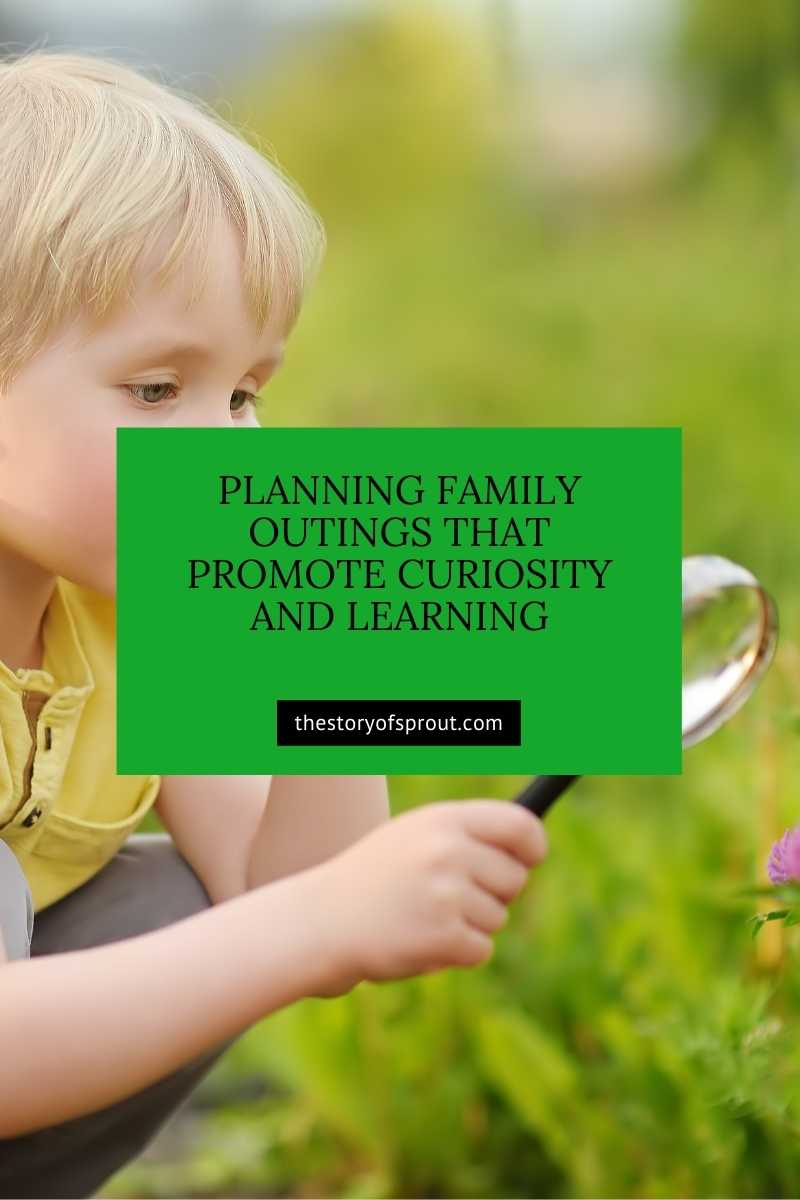
Planning Family Outings that Promote Curiosity and Learning
|
|
Time to read 7 min
|
|
Time to read 7 min
Family outings are more than just a break from routine; they are opportunities for creating lasting memories and fostering a love for exploration. Children are naturally curious, and family adventures can be the perfect way to nurture this innate sense of wonder. Whether it's a trip to a museum, a hike through a nature reserve, or a visit to a historical site, these outings can inspire curiosity and a lifelong passion for learning. This guide will help you plan enriching family outings that promote curiosity and learning, turning every trip into an adventure.
Table of contents
Visiting historical sites can make history come alive for children. Walking through ancient ruins, exploring old forts, or visiting historical landmarks can ignite a fascination with the past and promote curiosity and learning.
Research Before You Go
Prepare for your visit by researching the historical significance of the site. Share interesting stories or facts with your child to pique their interest. Understanding the context will make the visit more meaningful and engaging, enhancing curiosity and learning.
Interactive Experiences
Look for historical sites that offer interactive experiences such as reenactments, guided tours, or hands-on activities. These experiences can make history tangible and relatable for children, promoting curiosity and learning.
Storytelling
Turn your visit into a storytelling adventure. Describe the lives of people who lived during that era, their challenges, and their achievements. This approach can make history feel like a grand adventure and spark your child's imagination, promoting curiosity and learning.
Follow-Up Activities
After visiting a historical site, continue the adventure at home with follow-up activities. You could read historical fiction set in that era, watch movies or documentaries, or even create art projects inspired by what you learned, promoting curiosity and learning.
No matter where you go, there are ways to turn any outing into an educational adventure. Here are some general tips to keep in mind to promote curiosity and learning:
Embrace Spontaneity
While planning is essential, leave room for spontaneity. Sometimes the most memorable adventures happen when you follow your curiosity and explore unexpected paths, promoting curiosity and learning.
Foster a Love for Exploration with Questions
Encourage your child to ask questions about everything they see and experience. Questions like "Why do you think this happened?" or "How does this work?" can lead to fascinating discussions and deeper understanding, promoting curiosity and learning.
Use Technology Wisely
Smartphones and tablets can be valuable tools for enhancing learning on the go. Use apps to identify plants and animals, listen to audiobooks or podcasts related to your outing, or take photos and videos to document your adventure, promoting curiosity and learning.
Create a Souvenir Scrapbook
Collect brochures, maps, postcards, or small souvenirs from your outings and create a scrapbook together. This activity not only preserves memories but also encourages your child to reflect on their experiences and what they learned, promoting curiosity and learning.
Encourage Reflection and Sharing
After each outing, take time to reflect on what you learned and enjoyed the most. Encourage your child to share their thoughts and feelings about the adventure. This reflection reinforces learning and helps them appreciate the value of exploration, promoting curiosity and learning.
Different seasons offer unique opportunities for family adventures. Here are some ideas to inspire your outings throughout the year and promote curiosity and learning:
Spring: Blossom and Grow
Summer: Sun and Fun
Fall: Colors and Change
Winter: Wonder and Warmth
Family outings are powerful tools for promoting curiosity and learning. By exploring museums, Family outings are powerful tools for promoting curiosity and learning. By exploring museums, nature reserves, and historical sites, you can ignite your child's love for exploration and create unforgettable memories. Remember to embrace spontaneity, encourage questions, and use technology wisely to enhance your adventures. No matter the season, there are countless opportunities to learn and grow together as a family. So pack your bags, grab your curiosity, and embark on a journey of discovery. Adventure awaits, promoting curiosity and learning!
As you plan these enriching experiences, consider incorporating the themes from the book "Sprout" by Richard P. Gleason. "Sprout" is a beautiful story that teaches lessons of knowledge, truth, goodness, and self-discovery. The book follows the journey of a young plant, Sprout, who learns about the world through exploration and the guidance of wise friends. Just like Sprout, your child can learn valuable life lessons through their own adventures, discovering the beauty and wonder of the world around them, promoting curiosity and learning.
By weaving the themes of "Sprout" into your family outings, you can further inspire your child’s love for exploration and personal growth. Emphasize the importance of seeking knowledge, being truthful, acting with kindness, and understanding oneself. These outings can be more than just fun trips—they can be opportunities for your child to grow and flourish, just like Sprout, promoting curiosity and learning.
Through these enriching experiences and the wisdom shared in "Sprout," you will be nurturing a love for exploration in your child, encouraging them to see the world as a vast and exciting place filled with endless opportunities for learning and growth. Happy adventuring, promoting curiosity and learning!
